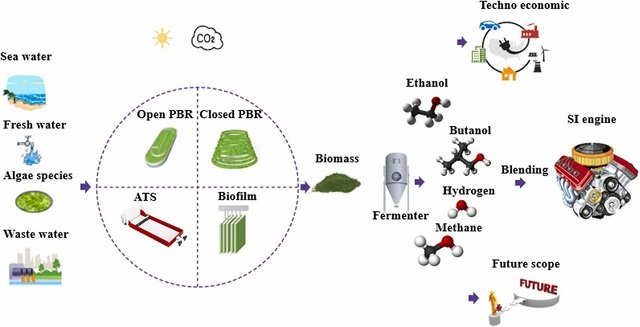by CNRS (Délégation Paris Michel-Ange)
The crucial role of insects in the pollination of flowering plants is well known, but algal fertilization assisted by marine animals was hitherto deemed non-existent. A team led by a CNRS researcher from the Franco-Chilean Evolutionary Biology and Ecology of Algae research unit at Roscoff Marine Station (CNRS / Sorbonne University / Pontificia Universidad Católica de Chile / Universidad Austral de Chile) has discovered that small crustaceans known as idoteas contribute to the reproductive cycle of the red alga Gracilaria gracilis. The scientists’ findings are published in Science (29 July 2022). They suggest that animal-mediated fertilization is much older than once thought.

Are sea animals involved in the reproductive cycle of algae, like pollinating insects on dry land? Dispersal of the male gametes, or spermatia, of red algae generally relies on water movement, and up until now, scientists did not recognize the role played by animals.
Yet an international team led by Myriam Valero, a CNRS scientist affiliated with the Evolutionary Biology and Ecology of Algae research unit (CNRS/Pontificia Universidad Católica de Chile/Sorbonne University/Universidad Austral de Chile) and Roscoff Marine Station (CNRS/Sorbonne University)1, has revealed that tiny marine creatures called idoteas act as ‘sea bees’ for the red alga Gracilaria gracilis.
Idoteas contribute to the fertilization of G. gracilis as they swim amid these algae. The surfaces of the male algae are dotted with reproductive structures that produce spermatia coated with mucilage, a sticky substance. As an idotea passes by, the spermatia adhere to its cuticle and are then deposited on the thalli of any female alga the crustacean comes into contact, thus helping G. gracilis reproduction.
But idoteas also stand to benefit in this arrangement. The seaweed gives them room and board: idotea cling to the algae as a protection from strong currents, and they munch on small organisms growing on their thalli. This is an example of a mutualistic interaction—a win-win situation for plant and animal alike—and it is the first time that animal-mediated fertilization of a seaweed has been observed.
While these initial findings do not indicate the extent to which animal transport of gametes contributes to algal fertilization relative to the role of water movement—previously thought to be the sole means of gamete dispersal—they do offer surprising insight into the origin of animal-mediated fertilization of plants. Before this discovery, the latter was assumed to have emerged among terrestrial plants 140 million years ago. Red algae arose over 800 million years ago and their fertilization via animal intermediaries may long predate the origin of pollination on land. Valero’s team now aim to focus on several other questions: Do idoteas trigger the release of spermatia? Are they able to distinguish male G. gracilis algae from female individuals? And most importantly, do similar interactions exist between other marine species?
Contact
Myriam Valero
CNRS researcher
T +33 6 24 59 41 01 / +33 2 98 29 23 28
valero@sb-roscoff.fr
Reference
E. Lavaut, M-L. Guillemin, S. Colin, A. Faure, J. Coudret, C. Destombe, M. Valero. 2022. Pollinators of the sea: a discovery of animal mediated fertilization in seaweed. Science, Vol 377, Issue 6605. pp. 528-530 DOI: 10.1126/science.abo6661
Stay Always Informed
Join our communities to instantly receive the most important news, reports, and analysis from the aquaculture industry.
Editor at the digital magazine AquaHoy. He holds a degree in Aquaculture Biology from the National University of Santa (UNS) and a Master’s degree in Science and Innovation Management from the Polytechnic University of Valencia, with postgraduate diplomas in Business Innovation and Innovation Management. He possesses extensive experience in the aquaculture and fisheries sector, having led the Fisheries Innovation Unit of the National Program for Innovation in Fisheries and Aquaculture (PNIPA). He has served as a senior consultant in technology watch, an innovation project formulator and advisor, and a lecturer at UNS. He is a member of the Peruvian College of Biologists and was recognized by the World Aquaculture Society (WAS) in 2016 for his contribution to aquaculture.




